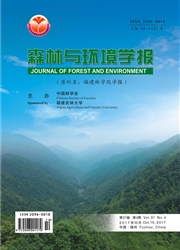

 中文摘要:
中文摘要:
发展森林碳汇是当前中国林业发展面临的新机遇和挑战。为提高中国森林碳汇经营能力和水平,助力中国减排增汇战略的实施,通过文献综述,综合分析了森林碳汇经营的现状、森林碳汇经营策略。主要结果如下:近30a来,中国森林碳汇持续增加,但仍存在森林碳储量、碳密度偏低,碳泄漏相对严重以及碳汇经营技术和实践偏弱等不足。针对上述存在的问题,提出了4种森林碳汇经营策略:(1)碳吸存,包括提高林地碳密度(如碳汇树种选择和改良、建立合理群落结构,科学抚育管理,确定合理轮伐期)、减少林地碳泄漏(降低更新过程及幼林地的碳排放、降低营林和木质产品生产过程的碳排放)、增加森林面积(包括退化地造林、发展城市森林、农林复合经营);(2)碳保存,包括减少森林灾害、保护天然林、增加木质产品碳保存等;(3)碳替代,包括推动木质产品取代高耗能材料和发展生物能源技术;(4)碳管理,包括建立森林碳汇估算基线及动态监测体系,建立和健全碳交易机制,促进森林生态效应补偿等。研究认为中国森林碳汇经营尚处于起步阶段。未来可从完善森林碳汇理论、建立森林碳汇测量技术和完善森林碳汇交易市场人手,进一步发掘和释放中国森林碳汇的巨大潜力。
 英文摘要:
英文摘要:
Enlarging forest carbon sink is both a new opportunity and challenge to China's forestry industry. In order to improve the capacity for forest carbon management to cope with carbon emission reduction in China, the current situation of forest carbon management was analyzed and the strategic measures were put forth based on a literature analysis. The results showed that carbon sink in China's forests during the last three decades has been continuously increased, but the carbon density is rather low, the carbon leak is very serious, and there lacked of technology and practices of forest carbon management. Based on these, some strategic measures in China's forest carbon management were proposed: (1) carbon sequestration. It includes enhancing carbon density per unit forest land (by selection and improvement of the carbon tree species, building reasonable forest community structure, proper tending, and estimating suitable rotation length), reducing carbon leakage ( e. g. , carbon emission during forest regeneration and during forestry operations and wood product manufacture ) , and increasing forest area ( e. g. , afforestation in degraded land and urban area, agroforestry) ; (2) carbon conservation, that is, avoiding forest disasters, preserving natural forests, and increasing carbon sequestration in wood products ; ( 3 ) carbon substitution, i. e. , substituting wood products for energy intensive materials and developing bioenergic technology; and (4) carbon management, including establishing the baseline and the dynamic surveying technical systems for estimating forest carbon sink, and building the mechanisms for carbon trading and the compensation system for forest ecological benefits. The results indicated that forest carbon management in China is still in its initial stage, and future efforts, such as in developing theory in carbon management, building monitoring system of forest carbon sink, and improving forest carbon trade market, could greatly enhance China's forest carb
 同期刊论文项目
同期刊论文项目
 同项目期刊论文
同项目期刊论文
 期刊信息
期刊信息
